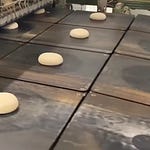In the bakery industry, the way a product looks often carries as much weight as how it tastes. Decoration techniques not only shape brand identity but also determine production efficiency and cost structure.
The contrast between hand-decorated and machine-decorated bread has become a key decision point for industrial producers seeking to balance artisan appeal with high-volume output.
Craftsmanship vs. Industrial Precision
Hand decoration has traditionally been associated with craftsmanship and authenticity. Skilled bakers create unique patterns and textures, adding character to each loaf. This artisanal touch appeals strongly to consumers, especially in premium segments.
However, manual decoration brings variability. Each loaf may differ slightly, and output depends on the speed and skill of operators. For small bakeries, this can be a strength. For large-scale operations, it can quickly become a bottleneck.
In contrast, modern decoration machinery ensures uniformity, speed and accuracy. Using stencils, rollers or robotic nozzles, automated systems can reproduce complex designs with millimetric precision, sustaining continuous production without compromising consistency.
Key differences include:
Hand: flexible design, human imperfections, slower pace, higher labor costs.
Machine: standardized output, faster pace, lower labor per unit, predictable yield.
Economics Behind Decoration Choices
Labor-intensive hand decoration requires trained personnel, and training adds time and cost. Fluctuations in quality can also lead to higher waste.
By contrast, automated systems involve an initial investment in equipment but deliver stable output at scale. The payback period can be short when production volumes are high.
Economic factors to consider:
Labor: Manual decoration often represents a high variable cost, while automation shifts costs toward fixed assets.
Yield: Consistency improves yield, reduces scrap, and supports lean production models.
Throughput: Automated systems sustain long runs with minimal downtime.
ROI: For medium to large bakeries, machinery often pays off quickly through labor savings and increased capacity.
Scaling Without Losing the Human Touch
For many brands, scaling production raises a critical question: How to maintain the artisanal appeal that attracts consumers while benefiting from industrial efficiency?
Common strategies include:
Hybrid models: Machines apply the base design at scale, and human decorators finish selected products for premium lines. This combination keeps unit costs controlled while preserving a handcrafted look where it matters most.
Imperfect perfection: Advanced decoration technology can mimic artisanal imperfections intentionally. For example, robotic scoring systems can vary patterns slightly within programmed parameters, giving the bread a more “authentic” appearance.
Premium segmentation: Reserve manual finishing for specialty or high-value product lines, while relying on automation for standard products.
Technical Consideration: Bread Improvers
At an industrial scale, achieving consistent results in decorated bread also depends on dough behavior.
Variability in elasticity, gas retention, or proofing tolerance can compromise decoration quality.
Bread improvers enhance dough stability, tolerance and machinability. Formulations that contain enzymes, emulsifiers, and oxidizing agents help the dough withstand mechanical stress during decoration, ensuring sharp cuts, clean stenciling and uniform surface textures.
👉 Which side are you on? Hand-crafted charm or machine precision? 💬 We’d love to hear your thoughts!
Sources:










